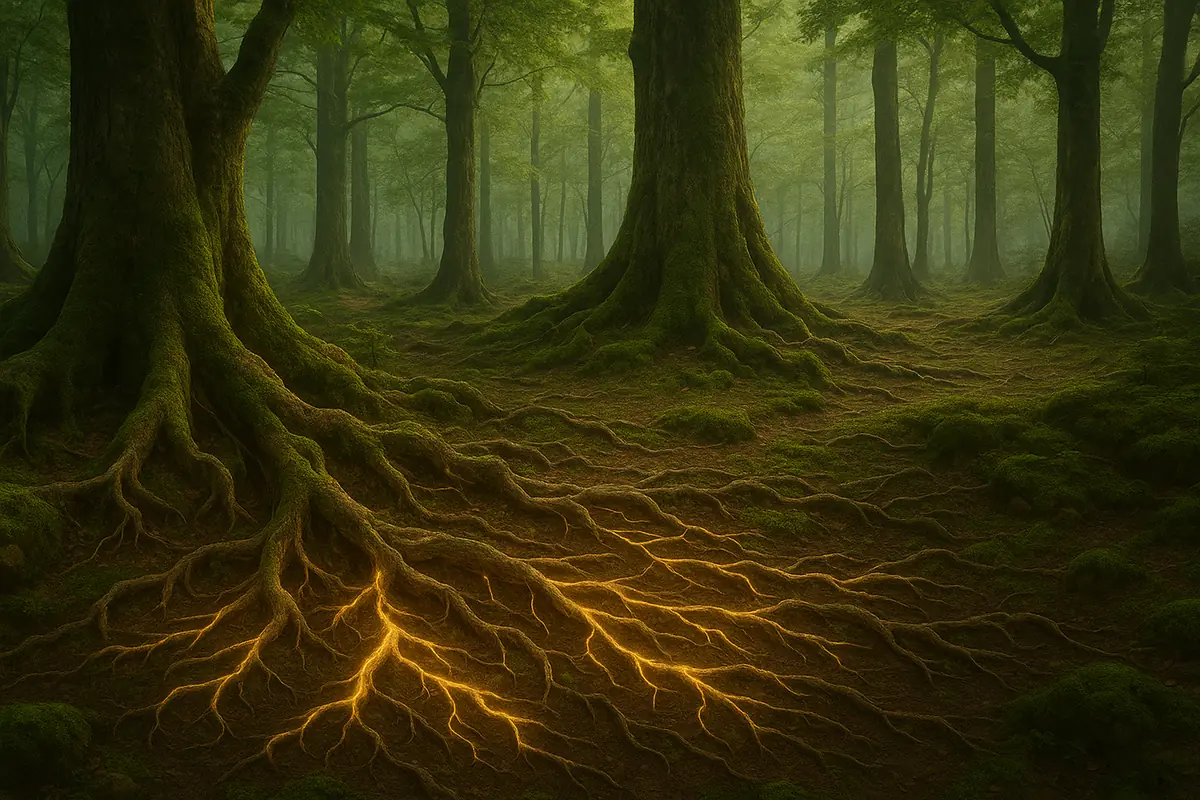How Trees Secretly Communicate Underground
Discover the hidden network beneath forests where trees share nutrients, send warnings, and quietly shape the world above.

If trees could talk, what would they say? According to researchers, they already do—just not in the way we expect. Hidden beneath every forest is an underground communication network that resembles something out of science fiction.
Most people think of trees as silent, solitary giants. But beneath the soil, their roots are connected to a vast web of fungi known as the mycorrhizal network. These microscopic threads link tree to tree, forming what some call the “wood-wide web.”
This network allows trees to share nutrients, exchange chemical signals, and even warn each other of danger. It works a bit like an invisible postal service, delivering messages and resources across astonishing distances. A single tree can be connected to dozens of others, and a whole forest may act as one living, breathing organism.
One of the most surprising discoveries is that older, larger “mother trees” often support younger saplings. When a young tree struggles to get enough sunlight, the older ones may send it extra carbon or nutrients through the fungal network. In other words: forests have their own quiet version of social care.
Communication isn’t always friendly, though. Some plants release chemical signals that limit the growth of competitors. Others send distress messages when insects attack, prompting nearby trees to boost their natural defenses. It’s not planning or strategy—it’s chemistry—but the effect is astonishingly coordinated.
This underground system doesn’t just help trees survive; it helps entire ecosystems stay resilient. When a tree falls or dies, the sudden change in nutrient flow is sensed by neighboring trees. They respond by adjusting their growth or redistributing stored resources. The forest adapts long before humans even notice a problem.
But this delicate network is also vulnerable. Deforestation, soil compaction, and certain modern logging practices can sever the mycorrhizal connections that hold forests together. A broken network means weaker trees, slower recovery, and an ecosystem that struggles to sustain itself.
The idea that trees communicate is more than a poetic metaphor—it’s a reminder that nature is far more interconnected than we tend to believe. A forest isn’t just a collection of individual trees. It’s a community bound together by millions of invisible threads, each carrying tiny messages that keep everything alive.
Next time you walk beneath a canopy of leaves, remember: the real conversations are happening right under your feet.